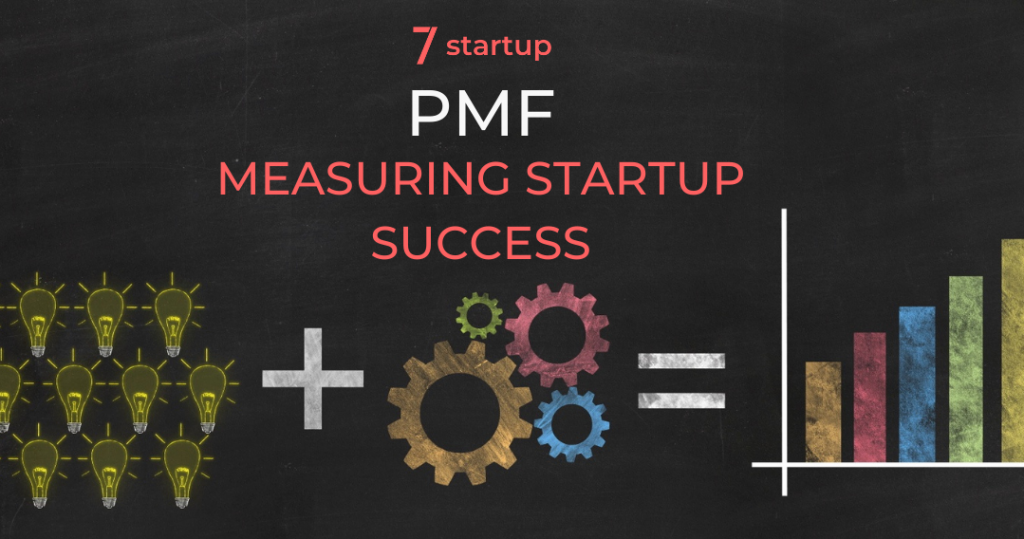Measuring startup success includes easy-to-track numbers. Examples of these are revenue, website hits, and the number of reactions on social media. However, getting a business off the ground as an entrepreneur is no easy task. How can someone tell whether their firm is getting traction even after they’ve been in the trenches for a couple of years? How does someone know that their product idea is going to be successful?
The number one reason why startups fail is due to misreading market demand — this is found in 42% of cases (via Embroker).
Product market fit (PMF) refers to the point in a company’s development when it has effectively identified a target client and is providing them with a product that fulfils their demands. According to Marc Andreessen, PMF is
“being in a good market with a product that can fulfil that market.”
It is common to seek PMF in the first two to three years of a company’s existence. A business that fails to establish PMF during this stage is generally forced to pivot or shut down.
How to Optimise your Product Market Fit?
The greatest worry many entrepreneurs have is that their products will die due to client turnover.
Successful products are those which keep up with their consumers. Those who can’t keep up or fail to broaden their current offers often doom themselves to a permanent residency in the dreaded ‘Death Valley’.
The best way to avoid this is to continue developing your product to stay relevant for your potential customers.
Additionally, since you’re enhancing your product’s capabilities, you may also be able to tap into new market sectors. Improving your PMF is a gradual process that can be done with the help of a great marketing and sales team. However, to speed up this process you should track metrics like Net Promoter Score (NPS) and Customer Churn Rate (CRR).
Scaling after Product Market Fit
Scaling is the next phase in a startup’s lifecycle after establishing PMF. Scaling before you have achieved PMF can be disastrous.
Scaling is a popular method of expansion for many business entrepreneurs. They believe that by doubling the number of people, they would be able to double the rate at which goods are released. They then extrapolate this double/double/double assumption to predict that their revenue or client base will quadruple.
Scaling is frequently the beginning of the end for startups because a startup’s financial flow is drained by scaling. Your startup will fail if you don’t have enough money flowing in to cover the expense of your teams and the service/product you are offering.
Don’t Scale too Slowly
On the other hand, you should avoid scaling so slowly that your firm is entirely caught off guard when PMF begins to emerge. You could discover that demand for your product is rapidly increasing. Furthermore, there could be potential sales and partnerships that you are not taking advantage of.
Getting into a PMF is largely about being in the right place at the right time and encourages entrepreneurs to seize the moment as they see fit. As your startup’s effect radius grows, it’s a vanishing illusion that you’ll have to keep pursuing. Only through evolving with your consumers can you maintain your product in line with the market. Make your customers, or target audience, your growth compass. This means creating new product roadmaps, prioritising feature releases, or rolling out new offers based on their feedback.
Many marketers attempt to quantify PMF as a statistic that helps companies grow, but many of them do it incorrectly. Yes, PMF is a watershed moment — but it’s also a fluid concept that adapts to product updates.

The PMF Journey. Image from via Adam Fisher
Here are some Financial Metrics to Measure Startup Success
It’s important to remember that cash flow is paramount. Your business isn’t viable in the eyes of investors if you aren’t earning money. That begins with keeping a careful check on how much money is coming in and whether it is increasing or decreasing.
Revenue is a straightforward metric: it’s the total value of your sales or invoices for a certain time period. However, the nature of your business determines the time range you employ.
If you sell high-value items or services, have a tiny customer base, or operate on long-term contracts, it’ll probably make more sense for you to concentrate on quarterly or even yearly income. Otherwise, you risk having numbers that are deceptive or unhelpful, making it appear as if you’re suffering when you’re working on a large contract that won’t be invoiced until the end of the year and you will end up losing a viable product.
Startup Metrics for Product Market Fit
Client Acquisition Cost (CAC) is a startup growth metric that determines how much it costs your company to acquire a new customer. You can calculate this by taking total sales for a certain time period, deducting marketing expenditures (salaries, tools, spend, etc.) for that same time period, and then dividing by the number of potential customers you gained during that time period. You must cross-reference this measure with your Customer Lifetime Value (CLV) for it to be relevant. The CLV tells you how much money you make from each client throughout their relationship with you.
Finally, your CLV must be significantly greater than your CAC for your company strategy to be profitable. It is a key metric to measure growth. As it costs so much more to acquire a new client than it does to resell or upsell to an existing one, keeping track of (and increasing) retention is critical. This means that concentrating on keeping and upselling to your existing client base is more important than recruiting new ones.
Use this Customer Retention Rate Formula to Help you
A = How many customers you have at the start of the period
B = How many customers you have at the end of the period
C = How many new customers you onboarded during the period
Customer Retention Rate (CRR) = ((B-C)/A) x 100
You can calculate the ratio between your selling, general, and administrative (SGA) expenditures and your sales numbers with this formula. It is crucial since it simply indicates if your business’s operating costs are comfortably greater than the income you generate. The easiest method is to divide the sum of all your outgoings by the entire revenue for any particular month.
Conclusion
Finding your target market and obtaining a group of consumers who enjoy your offering is rarely enough. This is a challenge that every startup faces in its early stages. Adding new features or lowering your rates won’t help you keep existing customers or attract new ones.
Bear in mind that keeping track of how these elements interact is just as essential as keeping track of them individually. When you compare them, you’ll get a full view of your company’s health.
Simply said, while this may increase client acquisition in the near term, it will not benefit you in the long run. The only thing you can do is strive to provide genuine value to your consumers as often as possible in a market that is ready to accept your new business idea.

Amit Khanna, 7startup Founder
Amit has 18 years of experience in the industry and an MBA. He supports entrepreneurs with every aspect of their business including concept and product development, investor presentations, and fundraising. Amit & 7startup assist startups in the pre-due-diligence process and help connect them to our vast network of investors. Reach out to us today and see if we’re a fit!




